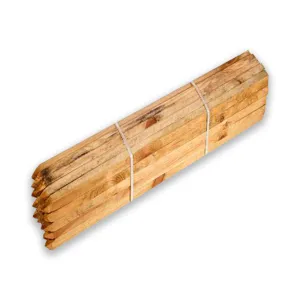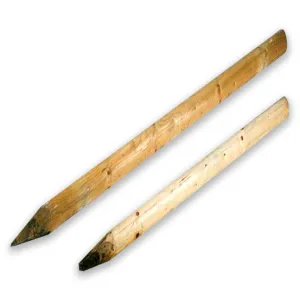Selecting the appropriate tree for your back garden involves more than aesthetics — it's a decision rooted in practical considerations that will shape the future of your outdoor space. It requires a thoughtful assessment of factors ranging from climate compatibility to maintenance requirements.
Suitable Trees for small to medium gardens
Japanese Maple
Japanese Maple, offers numerous small, slow-growing varieties that won't overwhelm your garden space. Their foliage displays vibrant autumn colors. Plant them in a sheltered area, away from direct sunlight, or experiment with cultivating them in a spacious container. Japanese Maple will thrive in most soils but prefers slightly acidic, well-drained soils. With several attractive options available, Acer Palmatum 'Orange Dream' is a great stand-out choice for small gardens, growing to 3m high.
Cercis
Cercis, commonly referred to as redbuds, are cultivated for their vibrant spring and summer blossoms. Cercis Chinensis 'Avondale' is a compact variety, making it the perfect small tree for small gardens. They can live happily in spacious pots and reach an average height of 3m.
Japanese Dogwood
The Japanese flowering dogwood, scientifically named Cornus kousa, is a small tree native to Japan and Korea. It produces numerous tiny flowers surrounded by distinct white bracts in early summer. As autumn sets in, the leaves take on a vibrant crimson color, accompanied by strawberry-like pink fruits. They grow to an average of 3m high x 3m spread.
Amelanchier Lamarckii
Amelanchier trees, such as Amelanchier Canadensis and Amelanchier Lamarckii, exhibit striking white blossoms in early spring and develop purple fruits during the summer. As autumn arrives, their dark green leaves transition to a golden hue. These trees thrive in sunny locations with moist but well-drained, neutral to acidic soil and can eventually reach a height of 10m high x 6m spread.
Wild Cherry
Wild Cherry boasts clusters of white spring flowers, red cherries and glossy leaves, adding ornamental value to gardens. Thriving in well-drained soil and full sun, it attracts birds and provides seasonal interest. They can reach 10-15m in height, but with regular pruning they can be kept compact.
Hawthorn
Hawthorn features small, lobed leaves, fragrant white flowers and red berries, thriving in diverse soil types, including clay. It's a hardy plant and provides habitat for birds, insects, and small mammals. Hawthorns make great hedges, too. Broad Leaved Cockspur Thorn Tree is best for small gardens, reaching an average growth of 5m high x 4m spread.
Weeping Silver Birch
The Weeping Silver Birch, known for its graceful branches, silver bark and delicate leaves, is an attractive and wildlife-friendly choice for gardens. Thriving in well-drained soil and full sun, it's suitable for small gardens, reaching a height of under 8 meters.
Rowan/Mountain Ash
Rowan, known for its white flowers, red berries and pinnate leaves, is a resilient and visually appealing tree adaptable to various soils. It attracts birds, adds seasonal interest and color, and is low-maintenance. There are various Rowan tree varieties, that vary in size. Rosiness is ideal for a small garden and reaches 4m. If you have a larger space, opt for Eastern Promise which can reach 8m.
Loquats
Loquats, characterised by their glossy evergreen foliage, are commonly found in urban gardens. Eriobotrya japonica, known for its fragrant flowers, fruits and glossy leaves, can reach a height of 8m. Alternatively, Eriobotrya deflexa or 'Bronze Loquat' is valued for its bronze-tinted leaves and scented flowers, growing to a height of around 5m.
Common Alder
Common Alder features catkins, serrated leaves and a conical shape, making it distinct and well-suited for wet or waterlogged soil. Ideal for damp areas, it supports wildlife and offers shelter. Native to Europe, it can reach heights of 25m.
Holly
With glossy, spiky leaves and red berries on female plants, this species is versatile and visually appealing. Adaptable to various soils and partial shade, it offers year-round interest. It remains an attractive choice for gardeners seeking an evergreen option that attracts birds. They can grow up to 15 metres tall, but can easily be kept smaller with pruning.
There are many factors to consider when selecting trees for a small space. Want to draw in birds? Select trees with berries, providing not only perches but also potential nesting spots. Alternatively, for a fruitful yield, grow apple, pear or cherry trees.
Unsure about where to plant? Then opt for a container planting – experiment with different positions and conveniently relocate the tree if you need to move or protect it during winter. If you prefer a smaller option, explore shrubs. Viburnum, lilac and Elaeagnus are excellent choices for experimenting with this approach.
Understanding both the advantages and disadvantages of each tree species helps in making informed decisions based on your specific needs and constraints. Here are some points to keep in mind:
- Size and space: Consider the mature size of the tree and ensure it fits well within your garden space. Some trees, like English Oak, can become quite large, so they may not be suitable for smaller gardens.
- Maintenance: Assess your willingness and ability to provide necessary care. Some trees, like the Silver Birch, may require attention to pests or diseases, while others, like the Holly, may be slower-growing and may need patience.
- Soil conditions: While the trees listed are generally adaptable to various soil types, it's always beneficial to understand your garden's soil composition. If you're uncertain, a soil test can provide valuable information.
- Climate compatibility: Ensure that the chosen trees are suitable for your specific hardiness zone.
- Local regulations: Check if there are any local regulations or restrictions on planting certain tree species. Some areas may have guidelines to prevent the spread of invasive species.
- Watering needs: Understand the water requirements of the chosen tree and make sure it aligns with your garden's watering capabilities. Some trees, like Wild Cherry, prefer well-drained soil, while others, like the Common Alder, can tolerate wetter conditions.
- Aesthetic preferences: Consider your personal preferences for the appearance of the tree, such as its flowers, foliage and overall shape. Choose trees that align with the visual appeal you desire for your garden.
Remember that planting trees can be a long-term commitment, so it's important to choose species that not only suit your current preferences but will also thrive in your garden for years to come. Taking the time to research and plan will contribute to the success and enjoyment of your garden. Head to the tree planting section on our website for all the equipment you'll need.









